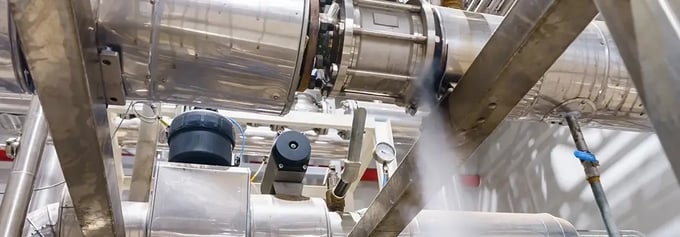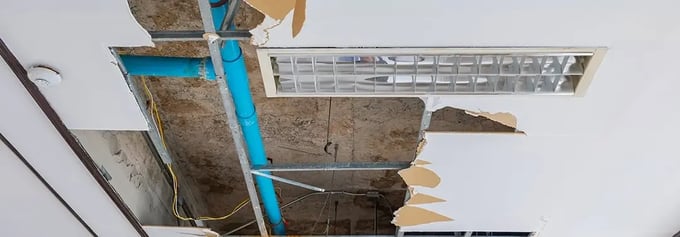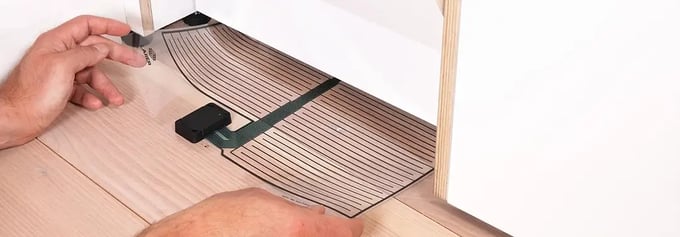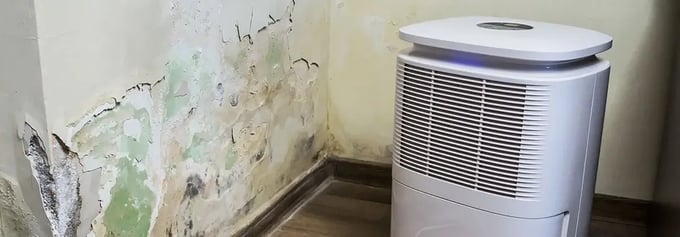Water damage in commercial buildings is a common and costly issue. From water pipe leaks to appliance failures, the specific ways in which water damage occurs will impact your property differently.
The cost of the damage (and downtime caused by the damage and its repair) quickly grows, particularly in larger properties. To minimize costs and protect your bottom line, it's vital that proactive measures are taken to prevent and detect water leaks at an early stage.
Technological advancements have resulted in a wide range of high performance solutions to detect leaks in commercial and industrial settings, including water leaks. Now it's up to these buildings' owner-operators and facilities managers to make a decision on investment in the right technologies.
Increasingly, insurance professionals must also be familiar with water leak detection equipment. Mitigating the chances of water damage could greatly help reduce the staggering US$2.5B annual costs to insurance firms in the US.

1. HVAC failures
Air conditioning units
Across the many HVAC appliances, air conditioning units are one of the most common sources of water leaks. They boast a number of potential water leak points, including drains that clog, evaporator coils that freeze, and condensate pumps that malfunction.
These problems can often be attributed to the need to constantly clean dirt and debris from HVAC units.
Chubb reported an incident in a manufacturing plant, where a coupling on an air conditioning unit leaked over 12,000 gallons of water. This cost the business around US$4M in lost revenue, clean-up costs, and achieving regulatory compliance.
Hot water systems and heaters
Hot water systems and heaters in commercial buildings predominantly use water. In addition to more commonly known water tanks and heaters, underfloor heating is also booming in popularity, particularly in response to increasing environmental and energy efficiency standards for new builds.
While these systems can be very efficient systems due to concentrating a lot of water in one area, when they do fail, the leaks tend to be catastrophic.
How sensing technologies can help
The good news is that smart water leak detection systems are well-positioned to protect from these incidents. For example, water leak detection sensors deployed around critical joints on HVAC units can provide an early warning about a leak.
Temperature sensors can act as a "canary in the mine" for potential liquid leaks. By monitoring the key heating and cooling mechanisms on HVAC appliances, these sensors can warn you if coils are freezing, or ducts and pipes are becoming too hot because they need cleaning - conditions that might lead to both water and other liquid leaks.
And while not related to liquid leaks, it's worth noting that some gas sensors have been designed to detect refrigerant gasses used in most air conditioning systems. Given the danger that these pose to both humans and the environment, this is valuable; and may also provide a warning to pre-empt liquid leaks.

2. Plumbing leaks
Pipes, toilets, showers, baths, and sinks are subject to frequent use and are therefore prone to wearing out and leaking. The amount of water and damage from leaks should not be underestimated: a small ⅛ inch crack can leak up to 250 gallons a day.
This is a constant issue for multi-residential buildings with stacked plumbing, as well as hotels and other hospitality venues. Leaks from toilets are the most common, accounting for nearly 1 in 6 events of interior water damage.
The frequency of leaks can significantly increase any business’ water bills; however, the real costs can come from the compounding repair costs. A leak in one unit can damage the walls and ceilings in all the units around it. This domino effect can lead to expensive business interruption and downtime costs, such as relocating residents while repairs are made.
Useful sensors for detecting plumbing leaks
The early water detection sensors we make at LAIIER were designed with this scenario in mind. We developed a sensor that can be applied like tape below pipes, joints, seals, and valves; and can detect as little as two drops of water with precision.
Water flow sensors won't detect where leaks are, but can offer insights into clogs and pressure problems in a building's plumbing. They're a useful supplement to more precise water leak detection.

3. Appliance leaks
Appliance leaks from washing machines, dishwashers, and water heaters are mostly caused by aging parts or clogs. What makes these leaks most difficult is that they only leak when the machine is running and actively pumping water - but when the water flows, it can rapidly flood entire rooms in minutes.
Getting ahead of leaks from appliances
Most appliances have a set lifespan, so it is best to ensure regular maintenance and replacement is carried out to prevent leaks. In reality, most appliances are not regularly maintained; and even if they are, failing parts may be overlooked.
The most suitable water leak detection solution for appliances will detect small leaks before they become catastrophic - the few drops of water, to the slow but steady leak that happens every time an appliance runs. If leaks are detected at these stages, repairs can be made before you're dealing with flooding.
4. Roof and wall leaks
Roof leaks are very common in commercial buildings. Rain, snow, wind, and poor maintenance are all factors that increase the likelihood of roof water leaks; and adding HVAC equipment, vents, and skylights only further increases the number of potential water ingress points.
Flat roofs on commercial buildings tend to experience water pooling, causing increased strain to the roofing infrastructure and membranes. Constant harsh weather and loading conditions are the reason why roofs need to be maintained and repaired regularly.
Like roofs, walls can be just as vulnerable as they are also exposed to the outdoor environment. Additionally, walls have many exterior features such as lights, HVAC units, and window and door frames. Damage from any of these features means there's a chance to create an opening that allows water inside the building.
How sensors can help to detect leaks
Sensors can be a valuable tool in preventing water damage from leaks in commercial and industrial buildings' roofs and walls:
-
Water leak detection sensors such as Severn WLD can be used in layers of roofing material, or around the frames of windows and doors to monitor any leaks.
-
You can mount sensors in drains and gutters to alert you if there are any blockages.
-
Structural health monitoring sensors, used for checking the levelness of walls, roofs, and their structural integrity, can also be used to detect water damage or pooling.

5. Flooding, groundwater, and sewage
Water damage from flooding and sewage backups may be the messiest and most complex water leaks. Excessive rain and overflowing riverbanks are extremely difficult to predict: once they start, not much can prevent them.
Flooding
Some smart sensing solutions are installed near bodies of water to detect flooding. However, there are few devices that detect flooding in buildings, though some are in early development.
Leaks caused by sewage blockages
Sewage blockages, on the other hand, can be guarded against with a few different tools:
-
Flow sensors can be installed by drain and sewage stack pipes to monitor if a blockage has occurred. These sensors are more common in larger-scale buildings such as multi-residential apartments and offices, where water use is significantly higher.
-
Water level sensors can also monitor the level of water in drains and sewers. These devices let the facilities manager know when levels are beyond what is expected.
-
Smart valves such as an automatic shut off valve can be used to prevent further blockage and backflow.

Increase protection against water leaks in your buildings
Severn WLD is ideal for protecting commercial properties from a broad range of water leak-related downtime and damage. It can quickly detect as little as 2 drops of water, alerting facilities managers of leaks well before they cause significant issues.
Find out more about Severn WLD, or book a call to discuss your needs.